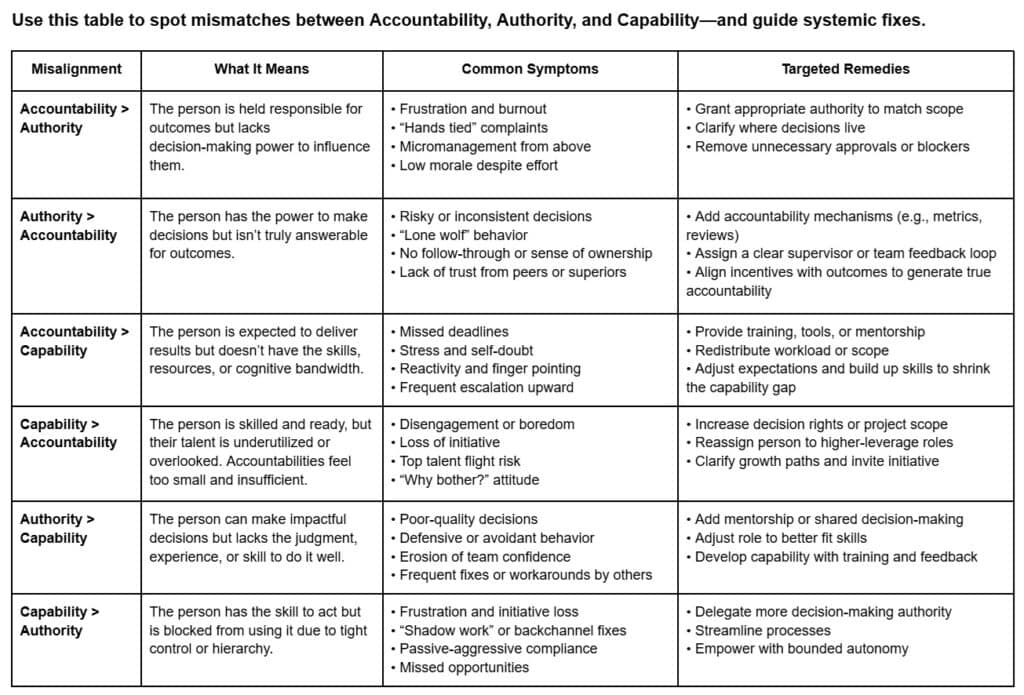We have a personality. I have a personality. Is that all we are? Of course not.
When we talk about personality conflicts, it implies that it’s the personality causing the conflict. But that’s not true.
People conflicts are rarely just about personalities. They’re signals—emergency alert flares indicating deeper misalignments in structure, clarity, or expectations. When trust breaks down and conflict emerges, you’ll hear the familiar refrains: “I thought that was their job,” “Why didn’t I have a say?”, or “I’m doing everything I can, but it’s not enough.”
Enter the Trust Algorithm™—a simple yet powerful framework that helps you spot where things are out of sync. When Accountability, Authority, and Capability are in sync, trust grows and people thrive. When they’re not, dysfunction creeps in.
This piece is a quick, simplified diagnostic tool for putting the Trust Algorithm into action. If you want the deeper dive into the model and why it works, check out the full article here:
👉 The Trust Algorithm™ – What Builds or Breaks Trust at Work
Let’s get into it.
Foundational Assumptions
Make sure everyone is aligned on these core beliefs before applying the model:
- Trust is structural, not just emotional.
It flows from clear roles and systems, not just better vibes or empathy. - People issues often mask structural misalignment, not personalities.
Personality clashes usually signal mismatched authority, accountability, or capability—not bad actors. Not “toxic people.” - There’s a logical “algorithm” at play:
Accountability = Authority = Capability (for every role)
When these align, trust thrives; when not, dysfunction blooms.
Expanded Diagnostic Checklist

Putting the Diagnostic into Practice
- Pick a People Problem.
Think: “What tension or recurring conflict is blocking our team?” - Identify the Players.
Who’s involved? For each person, assess their Accountability, Authority, and Capability. Map where they’re out of balance. - Match to a Mismatch.
Use the table to spot which dynamic fits your situation best. It’s common to find multiple misalignments interacting. - Apply the Remedy.
Don’t guess. Use the structured fix listed to resync the triad. The goal: Trust = Accountability = Authority = Capability. - Test and Revisit.
Fixes often uncover deeper structural issues—keep iterating. This model rewards curiosity and experimentation, not assumptions.
When You Get Stuck
If you dig into the diagnostic and find yourself unsure how to interpret a mismatch—or you sense something’s off but can’t quite name it—don’t stay stuck. This work is nuanced, and sometimes a fresh perspective makes all the difference.
Reach out to me directly and I’ll help you unpack what’s going on, identify the real friction points, and figure out what small shifts can unlock big improvements. You don’t have to navigate it alone.
